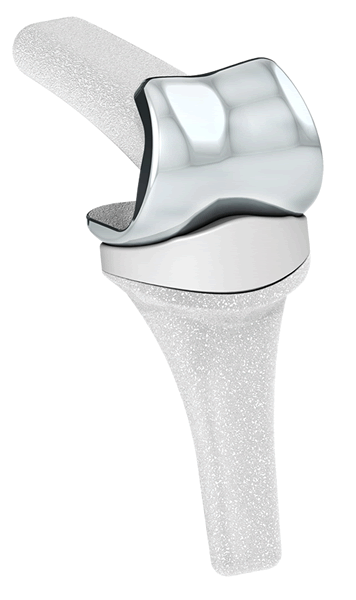PIPR™, Proximal Interphalangeal Replacement
- Products
- Finger Solutions
Natural movement without compromise
The PIPR™ is the result of in-depth study of the anatomy, soft tissues and biomechanics of the PIP joint [1] and novel research into its bony morphology [1].
The patented design uniquely preserves functioning collateral ligaments and allows for the natural combined rotation and angulation in the coronal plane during flexion, where alternative devices have oversimplified the PIP joint to a simple hinge. This is achieved with a fully conforming bearing couple that exhibits negligible wear [5].
With proven materials and press-fit cementless fixation, the device features all elements essential for implant longevity and is supported by a well-designed, accurate and repeatable surgical technique.
The PIPR™ has been in clinical use since 2006. Clinical data for the PIPR™ shows that it achieves:
- Relief from pain [2-4],
- Improvement in grip strength and function [2-4],
- Good range of motion [2-4],
- Low rates of revision [2-4].
Designed for longevity
Proven materials and articulating couple with a long heritage of clinical success in joint replacement devices

More natural function
- Single radius design for optimum ROM with balanced soft tissues
- Permits physiological rotation with flexion
- Anatomical bicondylar bearing
- Inherent dorsal-palmer and mediolateral stability
- Joint space maintained for restoration of natural function
Anatomical fit and sizing
- Based on morphological study of normal PIPs
- Normal functional radii and trapezoidal profile
- Peripheral bone maintained for ligament function
- Anatomical stem geometry for secure fixation
- Size range for all the population and cross-sizing possible for best fit canal to bearing
Designed for longevity
- Proven materials and articulating couple
- Fully conforming throughout ROM
- Large area contact maintained for low wear
- Press-fit anatomical stem for immediate stability
- Cementless HA coated bony interfaces for long-term fixation
Advanced instrumentation
- Options for surgical approach
- Ligament balancing technique
- Repeatable procedure with measured and guided resections
- Protection for the soft tissue structures
- Precise preparation instruments for secure fixation
Established clinical success
- In clinical use since 2006
- Good pain relief
- Improves grip strength and function
- Provides increased ROM
- Demonstrated low revision rates
Resources
PIPR™ Flyer
Download Now
Fill in your details below to download the PIPR™ Flyer.
PIPR™ Clinical Rationale
Download Now
Fill in your details below to download the PIPR™ Clinical Rationale
PIPR™ Brochure
Download Now
Fill in your details below to download the PIPR™ Brochure.
PIPR™ Operative Technique
Download Now
Fill in your details below to download the PIPR™ Operative Technique
References
- Lawrence T, Trail IA and Noble J. Morphological measurements of the proximal interphalangeal joint. J Hand Surg (Br & Eur). 2004; 29B; 3: 242-247.
- Broadbent M, Birch A, Trail I. A Short-term Review of the Finsbury Proximal Interphalangeal Joint Replacement. 2009; BSSH, Nottingham.
- Harley O, Dalal S, Banks L, Birch A, Hayton M, Trail IA. Long-term outcomes of Finsbury PIP joint arthroplasty for osteoarthritis. 2012; BSSH, York.
- Flannery O, Harley O, Badge R, Birch A, Nuttall D and Trail IA. MatOrtho Proximal Interphalangeal Joint Arthroplasty: Minimum Two-Year Follow-up. J Hand Surg (EU). 2015;Dec 1. pii: 1753193415614251. [Epub ahead of print]
- Naylor A, Talwalkar SC, Trails IA and Joyce TJ. In Vitro Wear Testing of a CoCr-UHMWPE Finger Prosthesis with Hydroxyapatite Coated CoCr Stems. Lubricants. 2015; 3: 244-255.